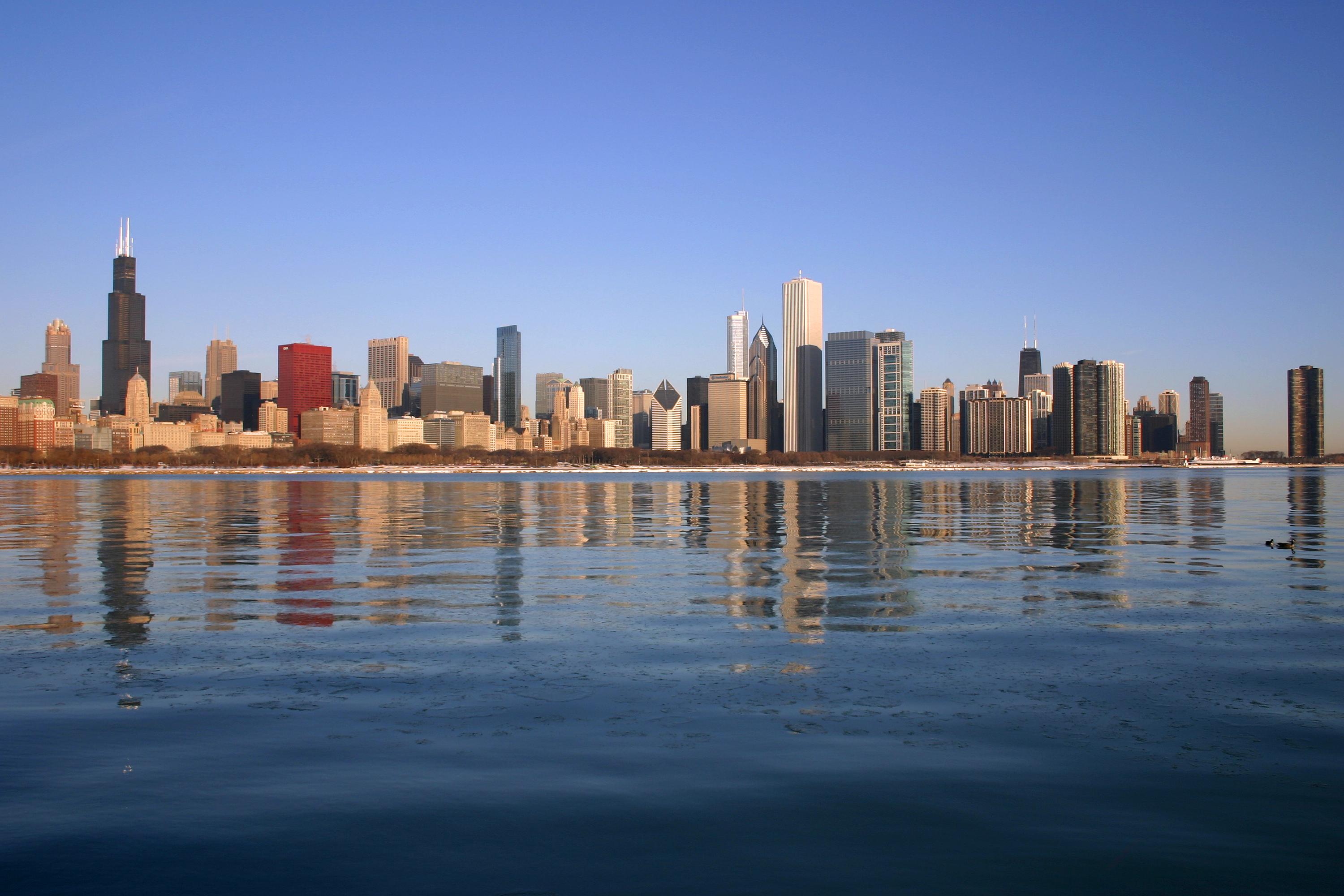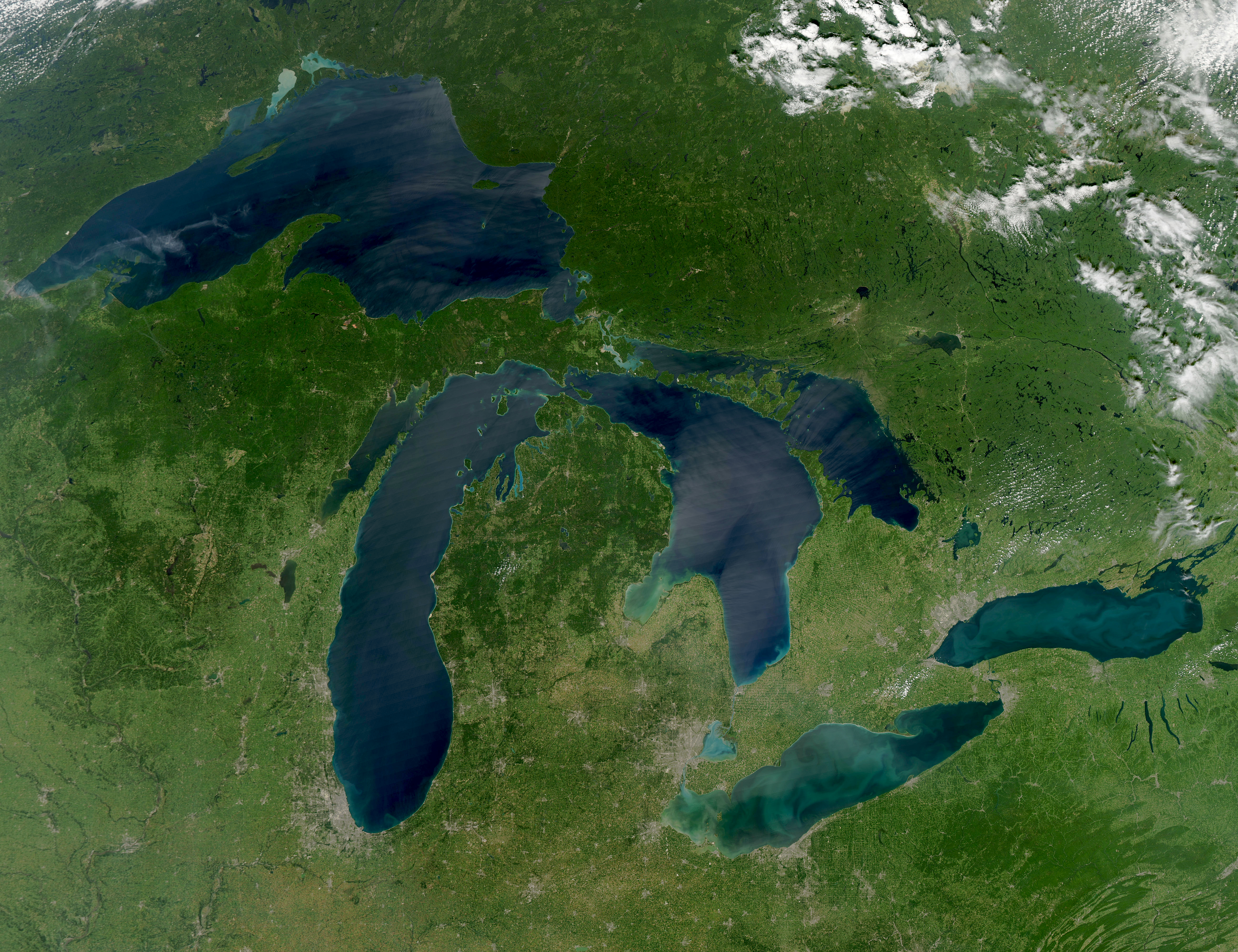
Chicago, city on the blue edge of Lake Michigan, plans to enter the “blue economy.” The city is reaching out to businesses in drought-stressed areas that need water for manufacturing: an example is silicon chip producers. As poet Carl Sandburg characterized it, the “City of Big Shoulders” is taking on the power of water. Current, a Chicago-based water innovation enterprise, is one of the prime movers. Current offers a private database with over 600 innovative technologies for water solutions: partners and contributors have access to that database. World Business Chicago, a public-private economic development agency, helped to launch Current. Other partners include the City of Chicago and Metropolitan Water Reclamation District of Greater Chicago (MWRD), along with universities and the U.S. Department of Energy’s Argonne National Laboratory.

Customers are not just businesses. The city of Joliet, Illinois, located 35 miles (kilometers) inland, signed a 100 year contract to buy water from Chicago from 2030 to 2130. Joliet now uses groundwater from wells located in the city, but the Illinois State Water Survey warned that the Cambrian-Ordovician Sandstone aquifer Joliet now relies upon will not be adequate after 2030. Joliet will join five other towns forming the Grand Prairie Water Commission. To encourage residents to accept the deal, Joliet named the project “Joliet’s Alternative Water Source Program” and set up a webportal along with social media sites.

Joliet will pay for the cost of facilities required to produce and deliver treated water, but not any costs for replacing service lines in Chicago or any cost of Chicago’s own water system. The revenue for Chicago is expected to generate $24 – $37 million annually, for a total of $1 billion of the life of the contract.

Chicago’s Jardine Water Purification Plant, world’s largest by volume, draws water from the Great Lakes to distribute to the the city’s residents. But some of the older pipes in the system may leak; estimates tally lost water at 6 billion gallons (22,712,470,704 liters) per day. In the United States, water leaks are responsible for the loss of 2.1 trillion gallons (7 trillion liters) per year – enough to put Manhattan under 300 feet of water. Chicago is also home to the world’s largest wastewater plant: Stickney Water Reclamation Plant. Chicago’s water economy is the 4th largest in the United States, and produces 83 patents per year for water innovation.

Lake Michigan is part of a series of freshwater bodies known as the Great Lakes, now joined in the Saint Lawrence Seaway terminating in Calumet Harbor, making the area one of the world’s largest inland ports (another large inland port is China’s Port of Nanjing). The Great Lakes supply 80% of North America’s surface fresh water. Globally, the water in the Great Lakes represents 18% of all global available fresh surface water.

Should water be sold? Restrictions in the GATT, General Agreement on Tariffs and Trade (now WTO, World Trade Organization) and an earlier version of NAFTA may be easing due to a decision by the Great Lakes Compact to allow Nestlé to bottle, sell, and export the Lakes’ water. In 2021, Nestlé withdrew its permit to extract groundwater near Evart, Michigan. Bottled water is a growing industry, so many may be looking to the Great Lakes. There is a provision in the Great Lakes-St. Lawrence River Basin Water Resources Compact, a binding agreement including the states of Illinois, Indiana, Michigan, Minnesota, New York, Ohio, Pennsylvania, and Wisconsin. The Compact allows bottling and small container use of the water, but forbids pipelines conveying water to distant places. For example, a pipeline from Lake Michigan to the state of Arizona would be forbidden. It might be noted that Arizona’s Land Department leased land to Fondomonte, a Saudi Arabian enterprise. Arizona’s state law allows unlimited pumping in rural areas. Fondomonte draws water from the Butler Valley basin to farm alfalfa. Agriculture uses 70% of Arizona’s water.
Historically, as cities have grown, water demand has spurred innovation.The Roman Aqueducts were engineered to bring fresh water to an expanding Rome. England’s New River brought needed water to a burgeoning London. The Colorado River was harnessed and directed to provide water to 40 million people in American states, Tribal Nations, and Mexico. All of these water innovations were dedicated to the public, and natural, commons.

Traditionally, water has been considered a “common pool resource” (CPR). Fishing grounds and forests are also considered common pool resources; some would add air. Elinor Ostrom, first women to win the Nobel Prize in Economics (shared with Oliver E. Williamson), established the theory of the commons in resource management and identified eight design principles for managing and sustaining the commons. It may also be noted that access to clean water and safe sanitation is #6 of the United Nations’ Sustainable Development Goals.

But exporting and selling water might be something new. Water trading is now part of the economies of Australia, Chile, Iran, Spain, and South Africa, among others. Is water a liquid asset or a human and natural right? Blue Economy developments are thriving. California manages a $1.1 billion water trading market. Arizona leases land and water rights to Saudi Arabia. The Chicago Mercantile Exchange offering is the first regulated, exchanged-traded risk management tool to manage water supply and demand risk.Water futures trade on the Chicago Mercantile Exchange in the Nasdaq Veles California Water Index futures: ticker H20M3.
When Earth was first seen from space, the most distinctive difference between our planet and others was the color blue. Earth is 70% water. We can live three weeks without food but only three days without water. As the world population grows, and climate change introduces alterations in water supply, water sustainability will be increasingly critical. Who owns water, who should benefit from its use, how to design and build water systems that renew this essential resource – all of these factors will determine our future.

What do you think? Is water a liquid asset in the new blue economy or a human and natural right for all? How will water futures influence the future of water?
Abrams, Daniel, and Cecilia Cullen. “Analysis of Risk to Sandstone Water Supply in the Southwest Suburbs of Chicago. Prairie Research Institute, Illinois State Water Survey, and University of Illinois at Urbana-Champaign. 2020. https://www.ideals.illinois.edu/items/116861
Allhands, Joanna. “The Saudis are draining Arizona to feed their cows, right? Well, not exactly.” 3 April 2023, Arizona Republic. https://www.azcentral.com/story/opinion/op-ed/joannaallhands/2023/04/03/saudi-land-leasse-not-draining-arizona-water-for-alfalfa/70070450007/
Almeida, Isis and Kim Chipman. “Chicago’s $1 billion water deal shows Great Lakes wealth.” 2 May 2023. Phys.Org. https://phys.org/news/2023-05-chicago-billion-great-lakes-wealth.html
Annin, Peter. The Great Lakes Water Wars. 2009. ISBN: 9781597266376
Brooke, K. Lusk. “Leaking or Lacking – Water Infrastructure,” in Renewing the World: Water, pages 49ff. ISBN: 9798985035919. https://renewingtheworld.com
CME Group. “Understanding the Water Futures Market.” July 2021. https://www.cmegroup.com/trading/equity-index/files/understanding-the-water-futures-market.pdf
Current Water. “Where Innovation Flows.” https://www.currentwater.org
Dempsey, Dave. Great Lakes for Sale: From Whitecaps to Bottlecaps. 2021. ISBN: 9781954786585
Joliet, Illinois. “Joliet Announces Historic Water Agreement with City of Chicago: 100-year Contract Ensures Sustainable Drinking Water Source for Southwest Suburban Residents.” 20 April 2023. https://www.joliet.gov/Home/Components/News/News/4278/41
Kalakailo, Sophia. “Company formerly known as Nestle drops water withdrawal permit” 26 October 2021. Great Lakes Now. https://www.greatlakesnow.org/2021/10/nestle-water-withdrawl-permit/
Ostrom, Elinor. Governing the Commons: The Evolution of Institutions for Collective Action. 1990 ISBN: 9780521405997.
United States Congress. “Great Lakes – St. Lawrence River Basin Water Resources Compact.” Public Law 110-342, 110th Congress. 3 October 2008. https://www.govinfo.gov/content/pkg/PLAW-110publ342/html/PLAW-110publ342.htm
Appreciation to Richard Cathcart and Shira White for sharing aspects of research.
